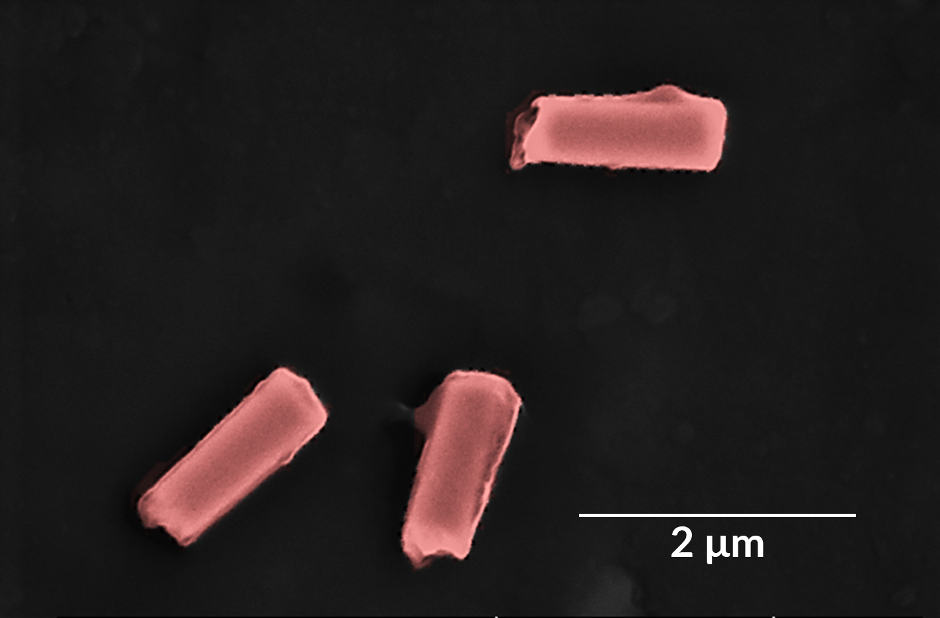Ultrasound-powered nanorobots could one day sail through blood to remove harmful bacteria and toxins.

Coloured SEM image of nanorobots coated in hybrid platelet/red blood cell membranes (Image: Esteban-Fernández de Ávila/Science Robotics)
This is the goal of engineers at the University of California San Diego (UCSD) who have developed proof-of-concept nanorobots with the potential to safely and efficiently detoxify and decontaminate biological fluids.
Researchers built the nanorobots by coating gold nanowires with a hybrid of platelet and red blood cell membranes. According to UCSD, this hybrid cell membrane coating allows the nanorobots to perform the tasks of two different cells simultaneously - platelets, which bind pathogens like MRSA bacteria, and red blood cells, which absorb and neutralise the toxins produced by these bacteria.
The gold body of the nanorobots responds to ultrasound, which gives them the ability to swim around rapidly without chemical fuel. This mobility helps the nanorobots efficiently mix with their targets - bacteria and toxins - in blood and speed up detoxification.
The work, published in Science Robotics, combines technologies pioneered by Joseph Wang and Liangfang Zhang, professors in the Department of NanoEngineering at the UC San Diego Jacobs School of Engineering. Wang's team developed the ultrasound-powered nanorobots, and Zhang's team invented the technology to coat nanoparticles in natural cell membranes.
https://www.youtube.com/watch?v=qe_uWIlySWw
"By integrating natural cell coatings onto synthetic nanomachines, we can impart new capabilities on tiny robots such as removal of pathogens and toxins from the body and from other matrices," said Wang. "This is a proof-of-concept platform for diverse therapeutic and biodetoxification applications."
"The idea is to create multifunctional nanorobots that can perform as many different tasks at once," said co-first author Berta Esteban-Fernández de Ávila, a postdoctoral scholar in Wang's research group at UC San Diego. "Combining platelet and red blood cell membranes into each nanorobot coating is synergistic - platelets target bacteria, while red blood cells target and neutralise the toxins those bacteria produce."
The coating is also said to protect the nanorobots from biofouling, whereby proteins collect onto the surface of foreign objects and prevent them from operating normally.
Researchers created the hybrid coating by first separating entire membranes from platelets and red blood cells. They then applied high-frequency sound waves to fuse the membranes together.
Since the membranes were taken from cells, they contain all their original cell surface protein functions. To make the nanorobots, researchers coated the hybrid membranes onto gold nanowires using specific surface chemistry.
The devices, which are about 25 times smaller than the width of a human hair, can travel up to 35 micrometres per second in blood when powered by ultrasound. In tests, researchers used the nanorobots to treat blood samples contaminated with MRSA and their toxins. After five minutes, these blood samples are said to have had three times less bacteria and toxins than untreated samples.




Report highlights significant impact of manufacturing on UK economy
I am not convinced that the High Value Manufacturing Centres do anything to improve the manufacturing processes - more to help produce products (using...